Chapter 20 PHYLOGENIES AND THE HISTORY OF LIFE
1/47
There's no tags or description
Looks like no tags are added yet.
Name | Mastery | Learn | Test | Matching | Spaced |
|---|
No study sessions yet.
48 Terms
Diversity of life
All organisms share many characteristics
-composed of one or more cells
-carry out metabolism
-transfer energy with atp
-encode hereditary information in DNA
Estimates for diversity of life
1.5 - 2.3 million species cataloged
• Total # of species: 5 (±3) million ??
• Total # of individuals - 100 billion – 1 trillion (including all prokaryotes) ??
Biologists group organisms based on shared characteristics
Fossil records
• Morphology
• Physiology
• Behavior
• Embryological development
• DNA/RNA sequences
Organizing life on earth
Systematics
Phylogeny
Systematics
Reconstruction and study of evolutionary relationships
Phylogeny
Hypothesis about relationships among taxonomic groups
• Depicted as a phylogenetic tree or cladogram
• Think of if like a Family Tree
Types of Phylogentic trees
Rooted:single lineage (at base) represents common ancestor.
unrooted:show relationships but not a common ancestor.
Parts of phylogenetic trees
Taxon:group(s) of organisms (species, family, domain, etc.)
Clade:any branch or lineage (lines in cladogram)
Branch point (node):splitting represents single lineage
evolving into two clades splitting represents single lineage evolving into two clades splitting represents single lineage evolving into two clades
Nodes are most recent common ancestor (MCRA) of subsequent clades
• Taxa that share a node, share a common ancestor, but they did not “evolve from each other”, only from a common ancestor at some point in the past
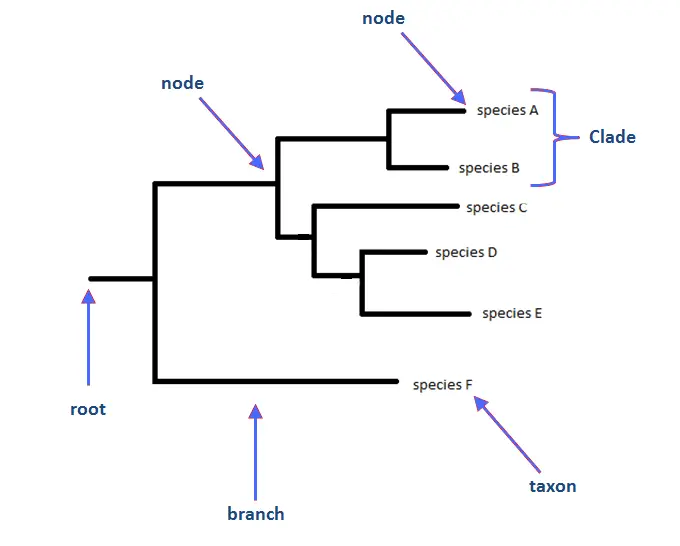
Closely related Taxa could look similar but not always
If evolved under different circumstances (selection pressures), the taxa may look very different
• Ex: lizards and rabbits are more closely related (amniotes) than lizards and frogs, yet lizards and frogs appear to be more similar
• Unless specified, the length of the branch does not indicate amount of time passed since the split (node)
Taxonomy
science of classifying organisms into taxa
Levels and types of classification
Traditional Linnaean system (after
Carl Linnaeus) uses a nested hierarchical system
• Moving from the root on a cladogram,
each group (taxa) becomes more
specific (more restricted)
• At each sublevel in the taxonomic classification system, organisms become more similar. Dogs and wolves are the same species because they can breed and produce viable offspring, but they are different enough to be classified as different subspecies.
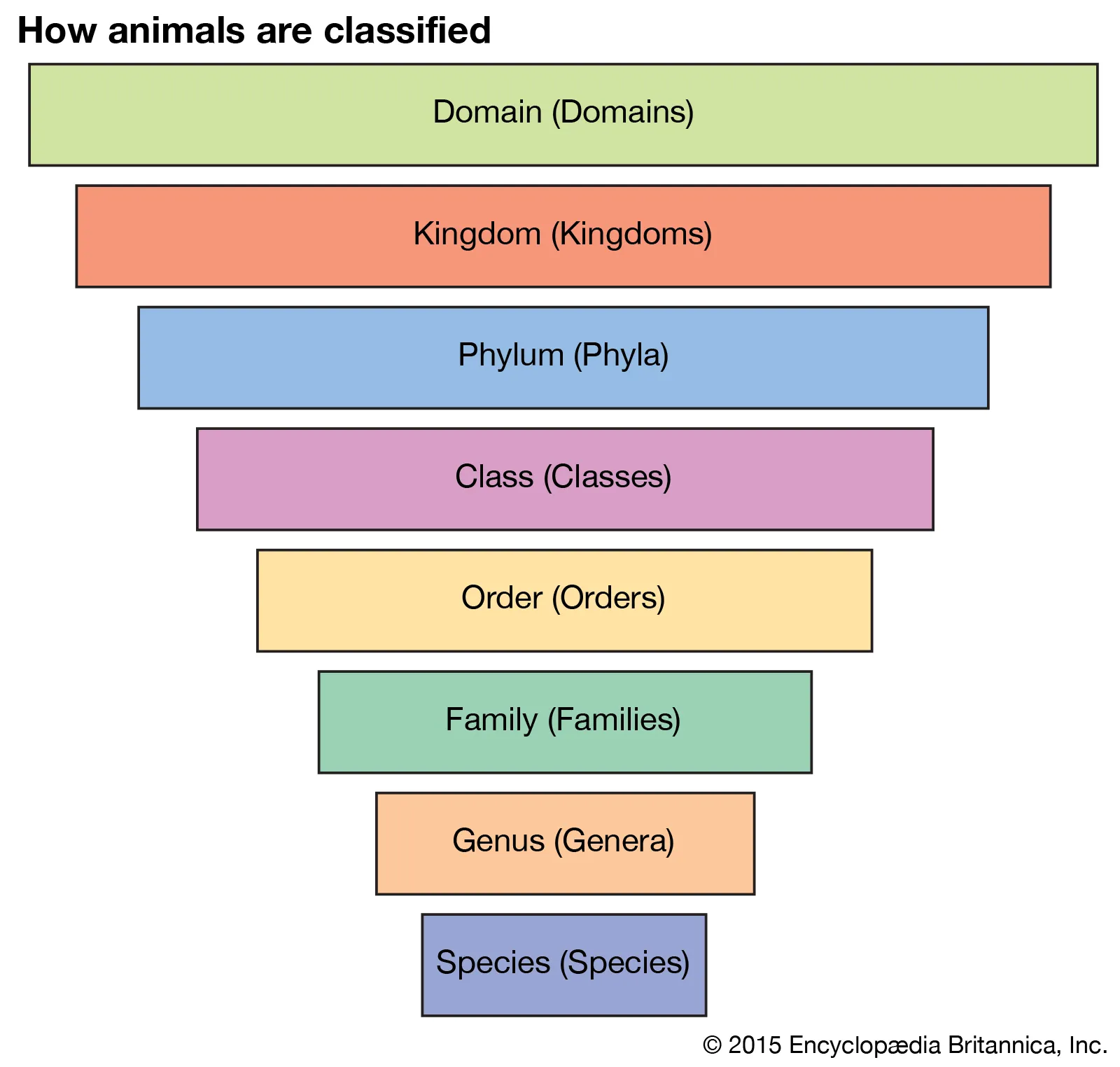
Binomial nomenclature
formal system for naming species of living things using two words. The first word indicates the genus, and the second word indicates the species.
Two name naming system
Species name = genus + species ‘epithet’
Higher taxonomic names are capitalized, but not italicized – example: Hominidae, Primates, Mammalia
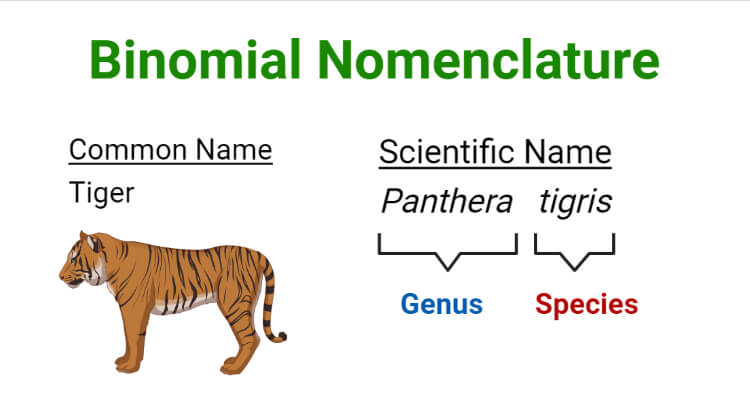
Species concepts
Biological species concept (BSC)
Phylogenetic species concept (PSC)
Phylogenetic species concept (PSC)
Species is a population or set of populations characterized by one or more shared derived characters
It's based on genetic data and focuses on the evolutionary history of a species

Biological species concept (BSC)
Defines species as groups of interbreeding populations that are reproductively isolated
defines a species as a group of organisms that can interbreed and produce fertile offspring
• Restricted definition to those organisms that undergo sexual reproduction – do all organisms sexually reproduce? What about bacteria?
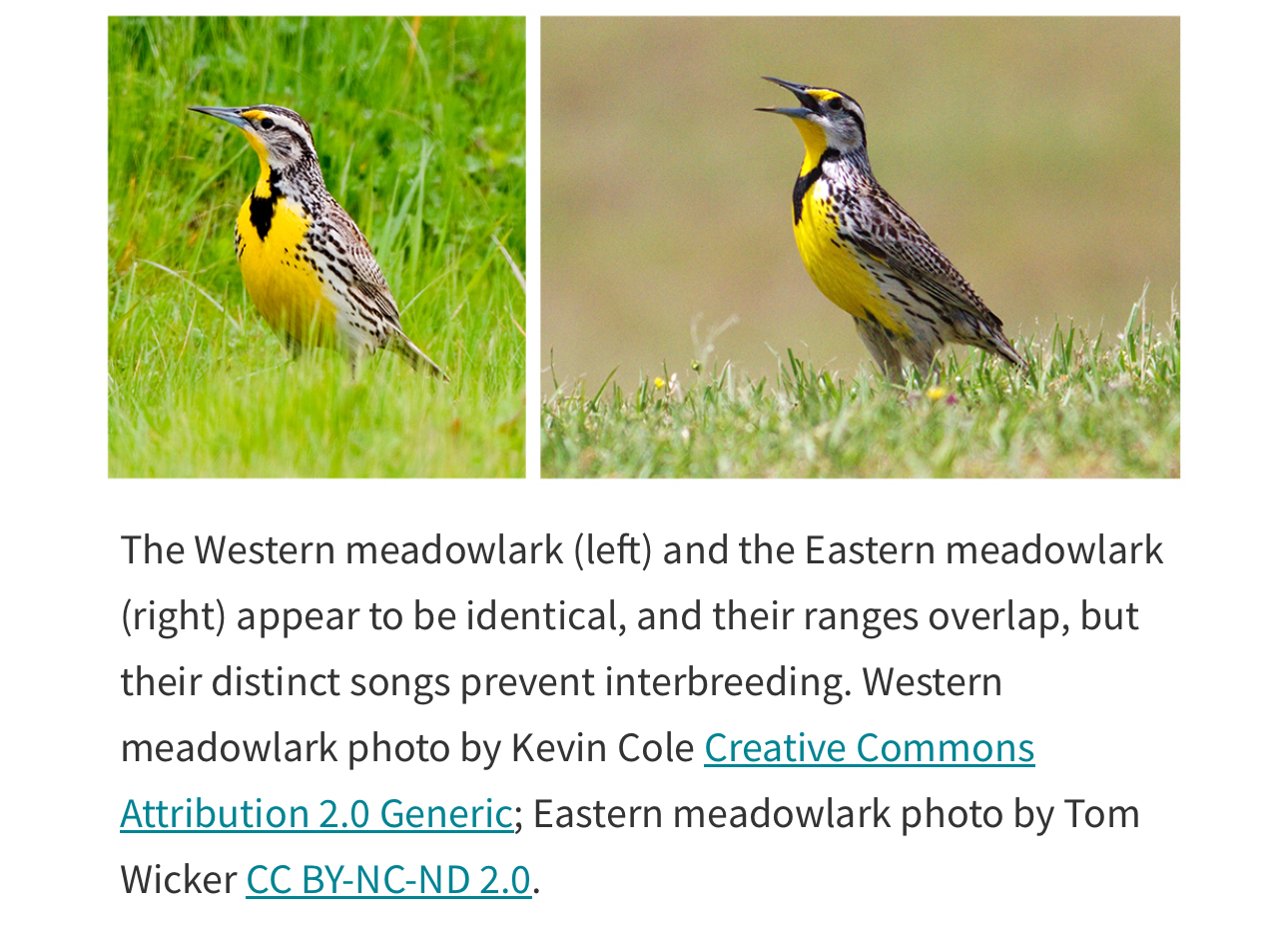
Determining evolutionary relationship
Systematists use diversity of evidence to determine relationships among organisms and higher taxa…
• Morphologic (form and function), physiologic, behavioral, and genetic characters DETERMINING EVOLUTIONARY RELATIONSHIPS
Two options of similarities
Homologous structures
Analogous structures
And evolutionary revsersal
Evolutionary reversal
Similar, analogous characters may cause taxa to appear related, when in fact they are not or only distantly related
• These can obscure true evolutionary relationships → lead to inaccurate cladograms
Ancestral traits are sometimes lost in descendants in one group
• Example: loss of limbs in snakes (all other reptiles have legs)
• Example: loss of hindlimbs in cetaceans
Why do phylogenies matter
Understanding of true evolutionary relationships is
important
• Understanding of evolutionary processes
• Research on related species may help to better understand
human health, medical issues
• Track evolution of parasites and viruses
• Use biotechnology to produce more productive crops,
domesticated animals
• Produce more effective drugs (e.g. human insulin)
• Improve conservation efforts for threatened and endangered
species
Monophyletic
Includes all descendants of a given ancestor
• Includes the most recent common ancestor and all descendants
• Each clade represents a ‘single cut’
Paraphyletic
taxonomic term that describes a group of organisms that share a common ancestor but do not include all of its descendants
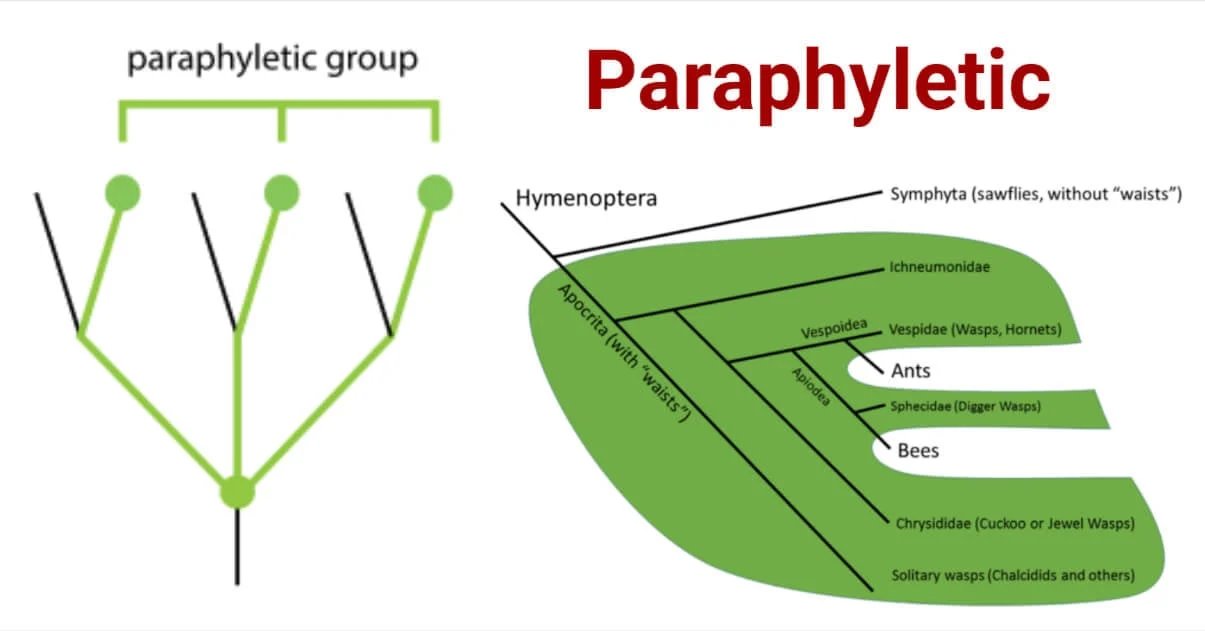
Polyphyletic
•group that have similar features but do not share common ancestor
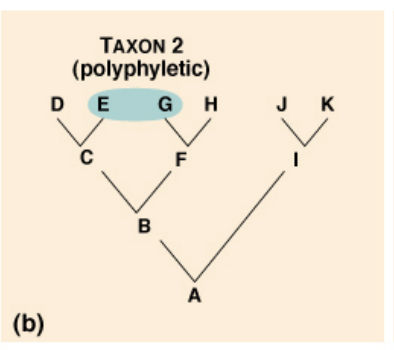
Clade
stem from a single point
(node) on the tree.
• A clade may contain multiple
groups, as in the case of
animals, fungi and plants, or a
single group, as in the case of
flagellates.
• Groups that diverge at a
different branch point, or that
do not include all groups in a
single branch point, are not
considered true clades.
symplesiomorphy
shared ancestral trait that is found in two or more lineages within a clade
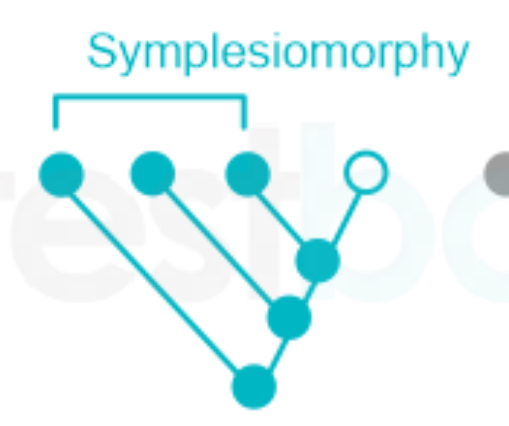
synapomorphy
Arose (derived) within the larger clade
• Distinguishes those that share it, from those that do not…
• Provides information about relatedness within the larger group
• Used to identify branch points (nodes) within the larger clade
is a shared derived character, meaning a trait that evolved in the most recent common ancestor of a group of organisms and is used to identify close evolutionary relationships
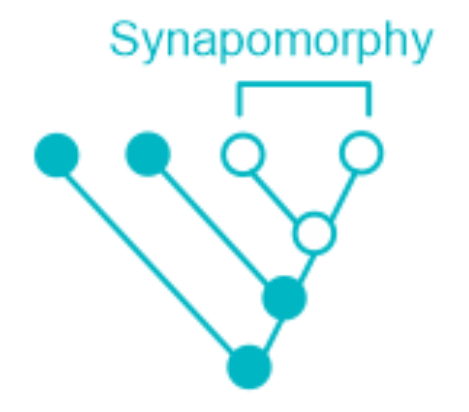
Apomorphy
New/unique derived trait
Example:absence of legs in all snake species of reptiles
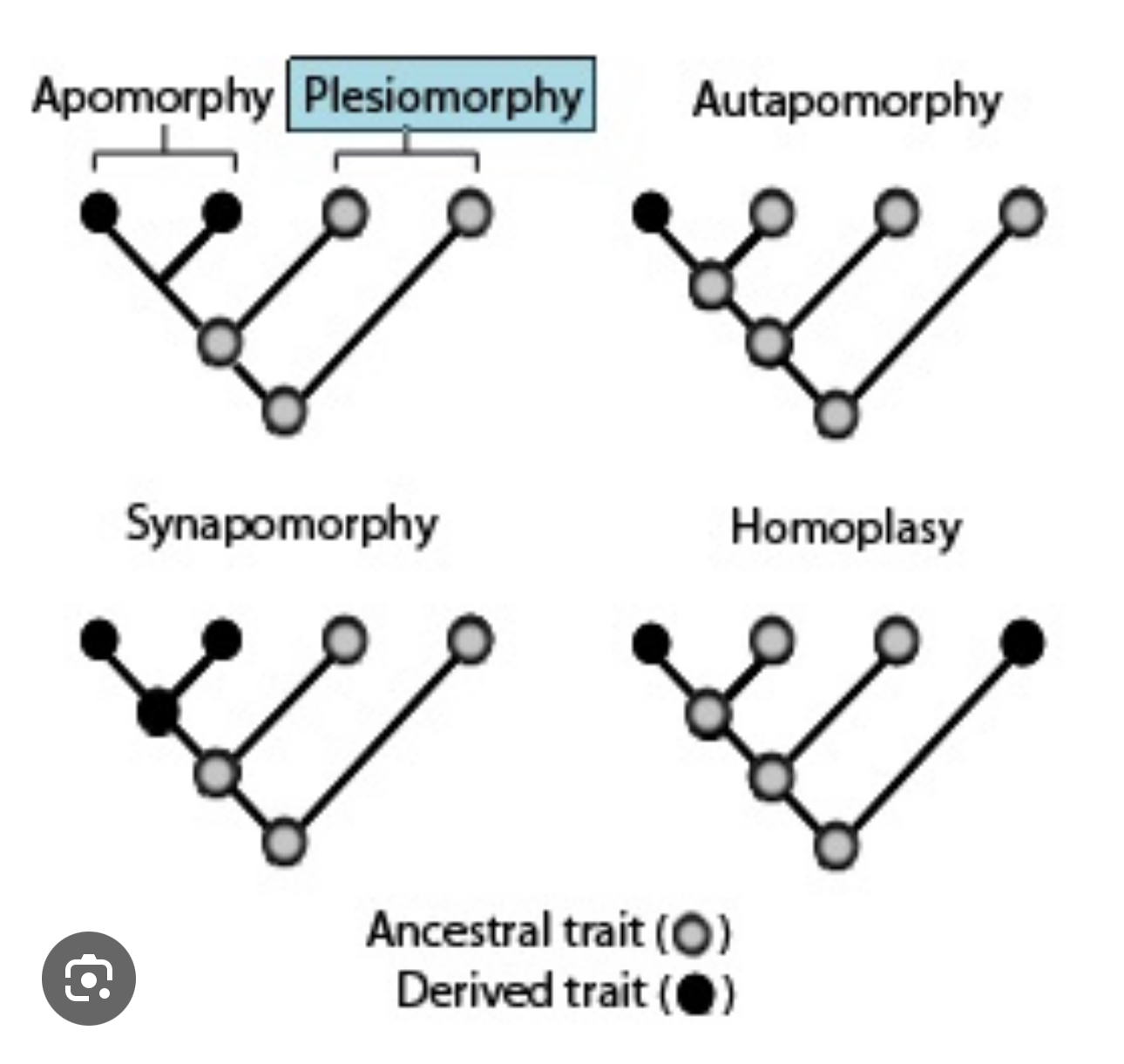
Plesiomorphy
The ancestral character state for a particular clade
Example: presence of some legs in reptiles but not all
Principle of parsimony
principle that things are usually connected or behave in the simplest or most economical way, especially with reference to alternative evolutionary pathways.
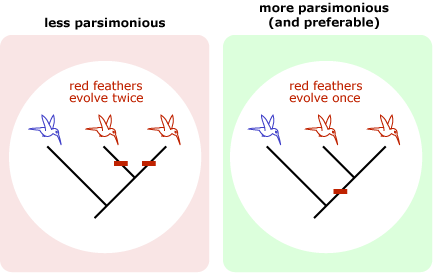
Limitations to the classical model of inheritance
Mendelian inheritance and its modifications assume that
genes are transferred from parent to offspring (vertical gene
transfer), and mutations are the primary sources new
genetic information
• This is not the complete story in prokaryotes, and even
some eukaryotes
• Horizontal gene transfer (HGT)
Horizontal gene transfer (HGT)
– transfer of genetic material between unrelated species
Transfer of genetic material from one species to another species
• More prevalent in prokaryotes
• Mutations and HGT are important sources of genetic variation
3 primary HGT in prokaryotes
Transformation
• Transduction
• Conjugation
Transformation
naked DNA uptake by bacteria

Transduction
Genes into you by a virus

Conjugation
Process of a bacterial cell giving another bacteria cell genetic information direct via pilus
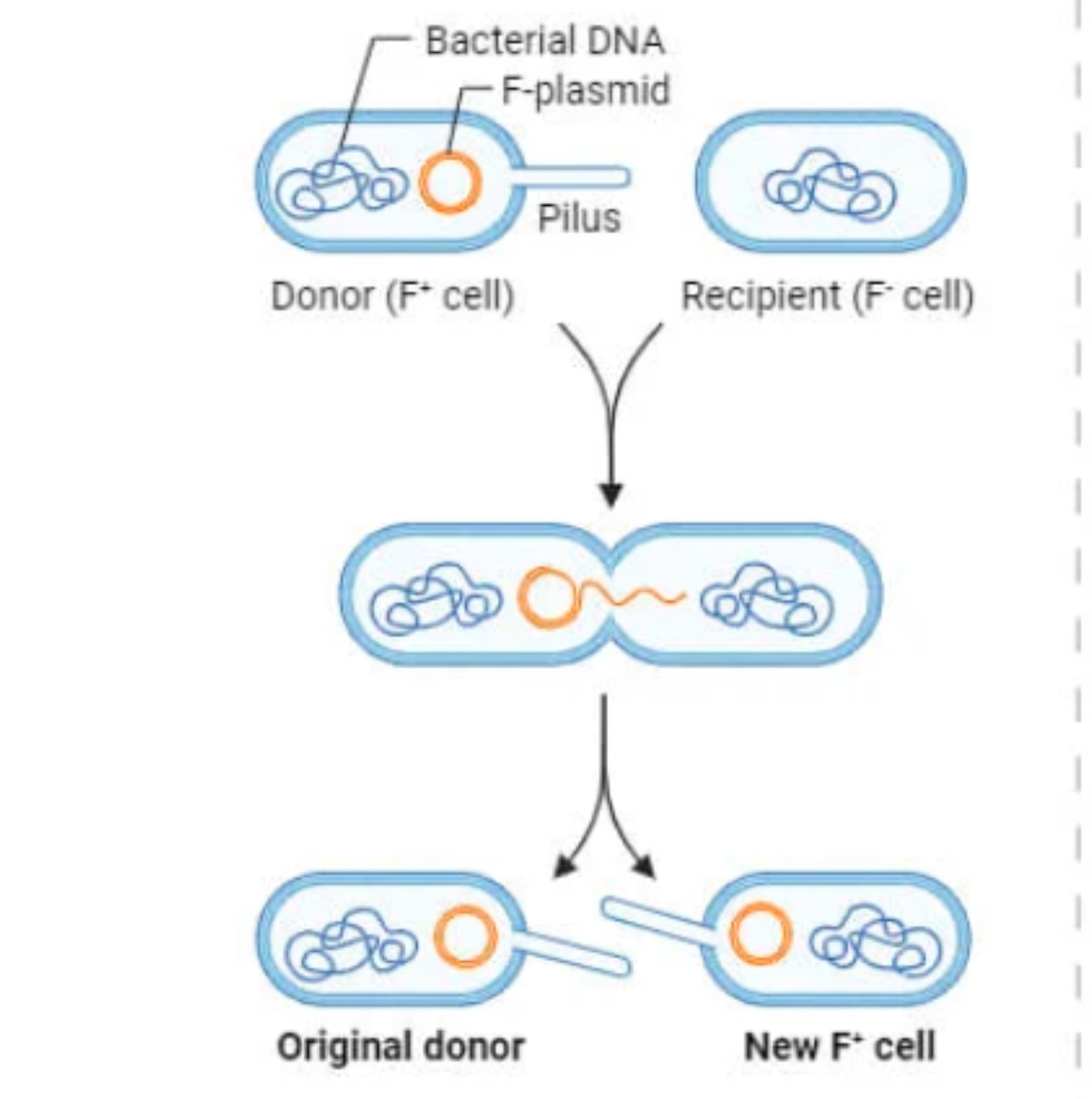
Endosymbiotic Theory of Eukaryotic
Origin
posits that eukaryotic cells evolved from simpler prokaryotic cells that merged together.
Mitochondria and chloroplasts originated by the engulfment of a prokaryotic cell by a ‘protoeukaryotic’ cell
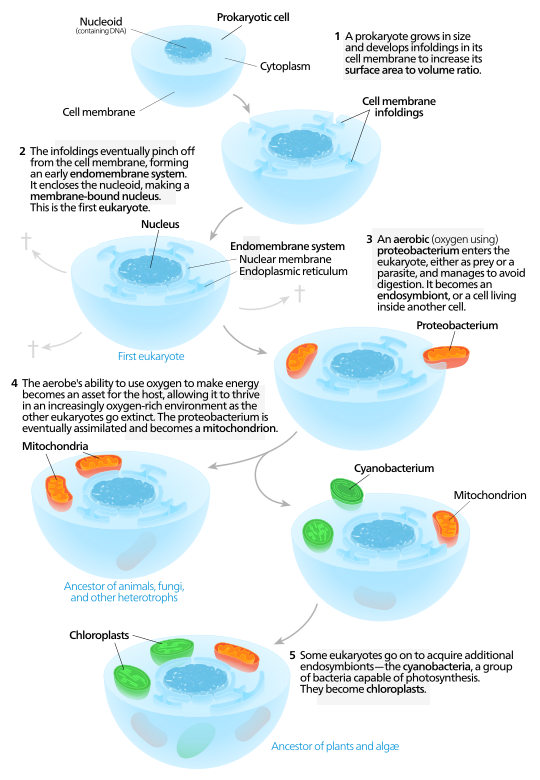
Prokaryotes
Organism who lack nucleus and other organelles
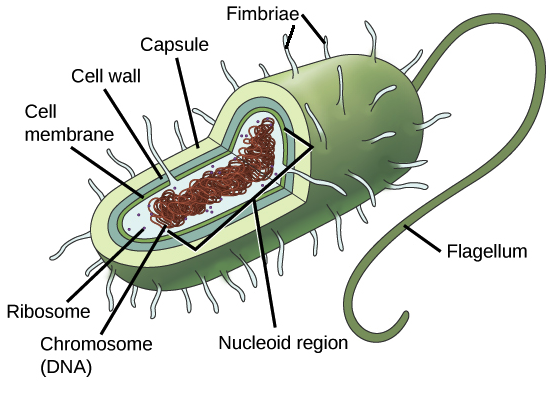
Eukaryotes
organisms with cells that contain a membrane-bound nucleus. They can be unicellular or multicellular, and include animals, plants, fungi, and protists.
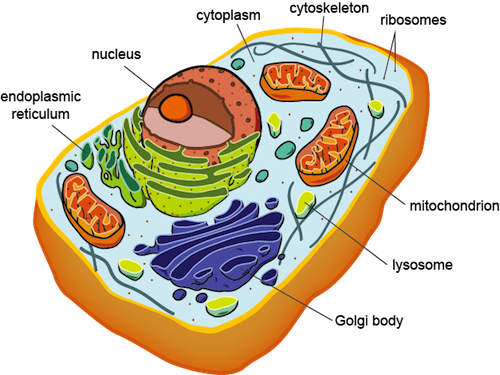
web of life model prokaryotic
HGT has been proposed to be
important in the evolution of
prokaryotes
• May lead to alternative to ‘tree of life’
model of evolution
• Instead, a ‘Web of Life’ model of
early prokayotes may be more
appropriate
• HGT mechanisms involved such that
eukaryotes evolved from a pool of
prokaryote species, some giving rise
to mitochondria, some to chloroplasts
the complex network of interactions and gene transfer between different prokaryotic species, where genetic material can be exchanged horizontally between diverse organisms, not just passed down vertically from parent to offspring,
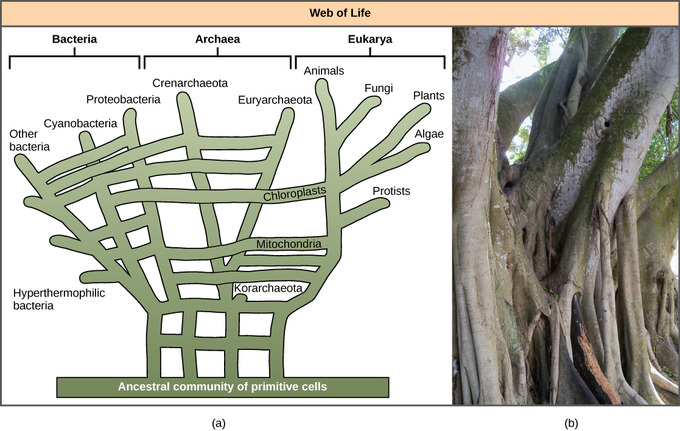
Ring of life models
Another example is ring of life model
Proposed that all three domains evolved from a pool of
prokaryotes swapping genes via HGT
• This may help explain how certain eukaryotic genes more
resemble those of bacteria, while others resemble archeans
Descent with modification(evolution)
Organisms (taxa) evolve from common ancestors,
then diversify… repeated many times
• Change in genetic makeup of an organism leads to a new trait
which may become prevalent in the group.
• Many organisms descend from this point and have this trait.
• New variations continue to arise: some are adaptive and
persist, leading to new traits.
• With new traits, a new clade is determined (go back to step 1
Which taxa is most inclusive
Domain
When looking at a phylogenetic tree, the point where two species branch is called a
Nodes
Which scientist is responsible for binomial nomenclature?
Carolus Linnaeua
The ________________ species concept defines a species as a group whose members are descended from a common ancestor and who all possess a combination of certain defining, or derived traits.
Phylogenetic
The tail of a shark and the tail of a l___________________ indicating similar environmental conditions and selective pressures but not shared ancestry.
Analogous
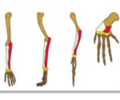
What is this image
Homologous structure

What is this
Paraphyletic- phylogenetics to describe a grouping that includes a common ancestor and some, but not all, of its descendants.
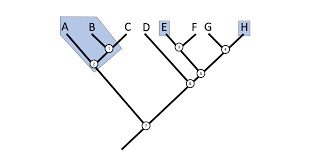
What is this
Polyphytic
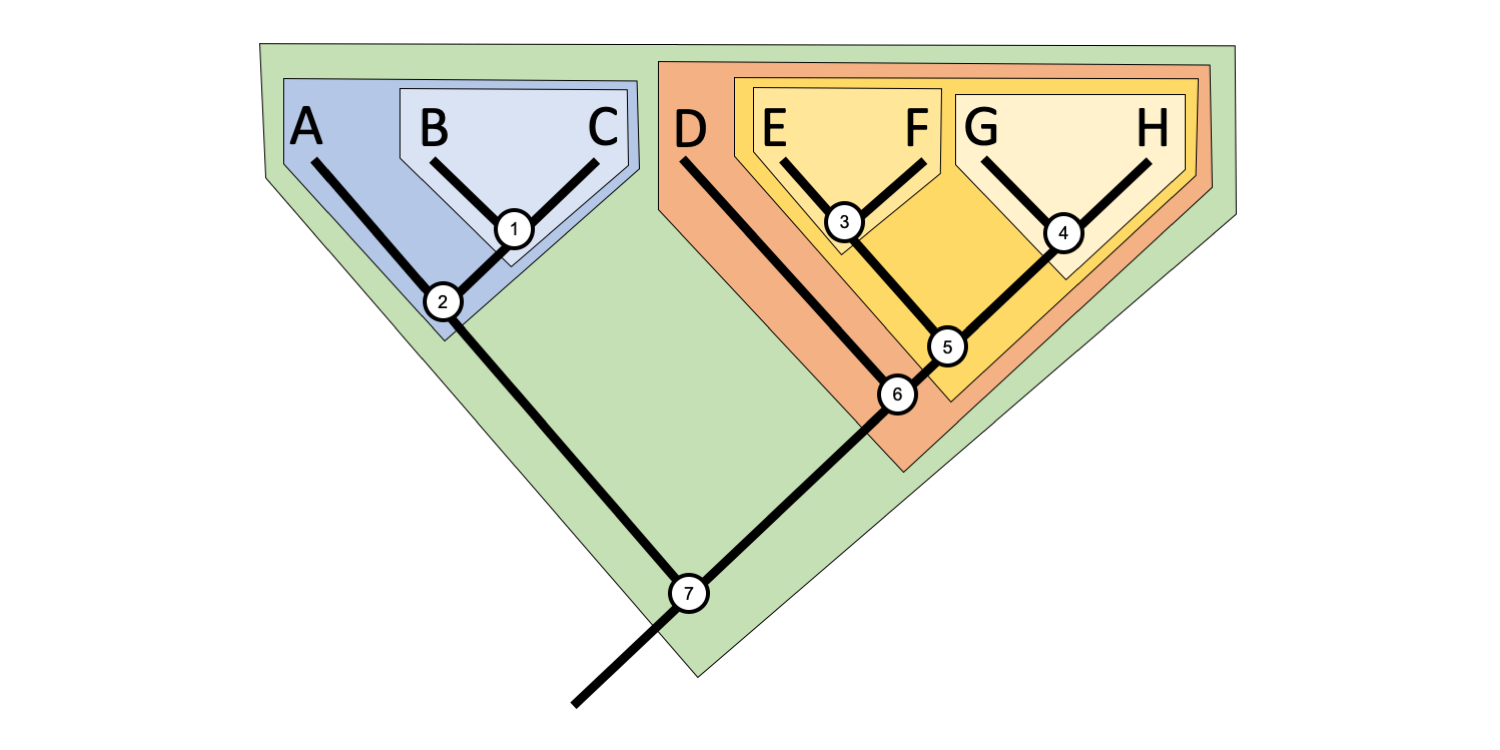
What is this
Monophythetic